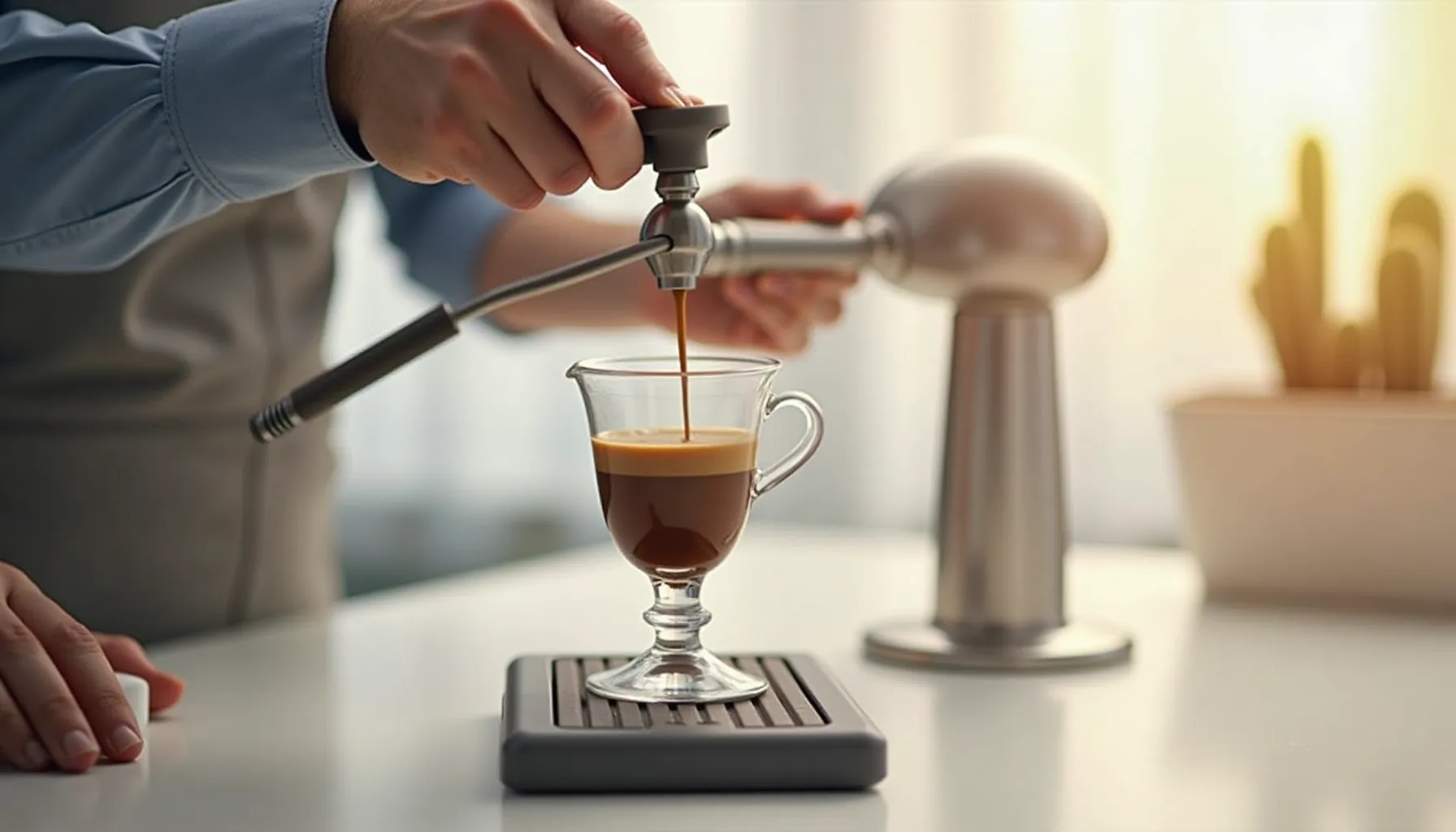Discovering the perfect Turkish coffee pot is an adventure into the heart of coffee culture. This guide unveils the secrets to selecting the best Turkish coffee pot, ensuring your brewing experience is nothing short of magical. With a rich history and unique brewing method, Turkish coffee is not just a drink but a ceremony that tantalizes the senses and invites you to a moment of sheer enjoyment.
Key Takeaways:
- Understanding the historical significance of Turkish coffee pots.
- Key features to look for when selecting a Turkish coffee pot.
- The role of material in the taste and preparation of Turkish coffee.
- Top recommended Turkish coffee pots for every enthusiast.
- How to care for your Turkish coffee pot to ensure longevity.
The journey of Turkish coffee begins with the right pot, known as a "cezve" or "ibrik," essential for crafting this intense and flavorful brew. Explore the Smithsonian's feature on this brewing art to grasp its cultural depth Smithsonian Article on Turkish Coffee.
Further insights can be gleaned from Coffee Chronicles, offering a deep dive into various coffee brewing methods, including the Turkish method.
Selecting Your Turkish Coffee Pot: A Buyer’s Guide
The Material Matters When it comes to choosing a Turkish coffee pot, the material is not just about aesthetics; it significantly influences the brewing process and flavor. Traditional pots are made from copper, renowned for its excellent heat conductivity, ensuring the coffee is brewed evenly and rapidly.
However, stainless steel and ceramic versions offer modern alternatives, each with their unique impact on the coffee's taste profile. For an in-depth comparison, Coffee or Die Magazine offers a compelling read on different materials used in coffee brewing equipment.
Size and Shape: Crafting the Perfect Brew The size and shape of your Turkish coffee pot play a crucial role in achieving the perfect brew. The narrow top and wide bottom design facilitate the ideal brewing temperature and foam formation, essential for authentic Turkish coffee. For those starting their journey, a medium-sized pot is versatile, suitable for serving one to two cups.
Aesthetic and Design: Beyond Functionality While the functionality of a Turkish coffee pot is paramount, the aesthetic appeal and design hold a place of importance in the Turkish coffee ritual. Intricate designs and handcrafted pots not only tell a story of heritage and craftsmanship but also add a touch of elegance to your coffee brewing experience.
Here's a YouTube video demonstrating the art of brewing Turkish coffee and showcasing the pot's importance in the process:
Top Picks: Best Turkish Coffee Pots for Enthusiasts
Embarking on the quest for the best Turkish coffee pot can be overwhelming with the plethora of options available. However, focusing on quality, craftsmanship, and material can guide you to the perfect choice for your brewing needs. Here are our top recommendations, each offering a unique aspect to enhance your Turkish coffee experience.
Copper Masterpiece: The Traditional Choice Copper Turkish coffee pots are prized for their superior heat distribution, making them the traditional and preferred choice among coffee aficionados. Their durability and timeless appeal make them a worthy investment for any coffee lover.
Modern Elegance: Stainless Steel and Ceramic Options For those seeking a modern twist on the traditional, stainless steel and ceramic Turkish coffee pots offer a contemporary aesthetic without compromising on the quality of the brew. These materials are easy to clean and maintain, making them practical choices for everyday use.
Artisanal Creations: Handcrafted and Unique Handcrafted Turkish coffee pots represent the pinnacle of craftsmanship, with each pot bearing the marks of its maker. These pots are not just brewing vessels but works of art, adding a sense of ceremony to the coffee brewing process.
Transitioning seamlessly from the practical considerations to the aesthetic appeal of Turkish coffee pots highlights the depth of choice available to enthusiasts. Whether you're drawn to the traditional copper pots for their brewing superiority or lean towards the modern designs for their convenience and style, the key is to choose a pot that resonates with your personal coffee ritual.
Stay tuned for the next installment, where we delve deeper into the art of making Turkish coffee, including step-by-step instructions and tips for perfecting your brew.
Continuing from our exploration of selecting the perfect Turkish coffee pot, let's dive deeper into the art of making Turkish coffee. This section will guide you through the brewing process, care instructions for your pot, and additional tips to elevate your coffee experience. We'll also address frequently asked questions and wrap up with a comprehensive conclusion.
Mastering the Art of Turkish Coffee Brewing
Brewing Turkish coffee is a meticulous process that rewards patience and precision. The key to mastering this brewing method lies in understanding its steps and nuances.
-
The Coffee Grind: Turkish coffee requires a very fine grind, finer than espresso. The coffee should resemble powder, allowing it to fully infuse with the water and create the signature thick, rich texture.
-
Water to Coffee Ratio: The standard ratio is about one heaped teaspoon of coffee per Turkish coffee cup (approximately 60-70 ml of water). Adjust according to taste preference, but remember that Turkish coffee is traditionally strong.
-
Sugar and Spices: Sugar and spices should be added to the water before heating for an even distribution. The amount of sugar is based on personal preference, ranging from unsweetened to very sweet. Cardamom is a common spice addition, enhancing the coffee's aroma and flavor.
-
Brewing Process: Combine water, coffee, sugar, and spices in your Turkish coffee pot and mix well. Heat slowly over low to medium heat. As the coffee heats, a foam begins to form. Just before boiling, remove from heat and distribute the foam into the cups. Return the pot to the heat and allow it to come to a brief boil. Repeat this process up to three times for optimal flavor.
-
Serving: Turkish coffee is served in small cups, similar to espresso, with the grounds settled at the bottom. Allow it to sit for a short period so the grounds can settle before drinking.
Caring for Your Turkish Coffee Pot
Proper care will ensure your Turkish coffee pot lasts for years and continues to make delicious coffee. Here are essential tips:
- Cleaning: Never use harsh detergents or scouring pads on copper or brass pots. Rinse with warm water and a soft cloth. For stainless steel or ceramic, mild soap can be used but rinse thoroughly.
- Polishing: Copper and brass pots will develop a patina over time. If you prefer the shiny look, use a natural acid like lemon juice and baking soda to polish.
- Storage: Dry your pot thoroughly before storing it to prevent mold or rust, especially important for copper pots.
Elevating Your Turkish Coffee Experience
- Water Quality: Use filtered water for the best taste, as tap water can introduce impurities that affect the flavor.
- Heat Source: Traditionally, Turkish coffee is brewed over sand or a low flame. If using an electric stove, keep the heat low to avoid burning the coffee.
- Serving Traditions: Serve Turkish coffee with a glass of water and Turkish delight or a piece of chocolate. The water cleanses the palate, enhancing the coffee's flavor.
FAQs on Turkish Coffee
What is the significance of the foam in Turkish coffee? The foam is a hallmark of properly brewed Turkish coffee, signifying a successful extraction and balance of flavors. It is cherished for its texture and is a sign of a skilled brewer.
Can Turkish coffee be made without a cezve? While a cezve is traditional and preferred for its narrow waist and wide bottom, which facilitate the formation of foam, in a pinch, a small saucepan can be used. However, the unique shape of a cezve is designed to optimize the brewing process of Turkish coffee.
How do I avoid a bitter taste in Turkish coffee? To avoid bitterness, ensure the coffee does not boil for too long. The key is to remove it from the heat right before it boils over, preserving the flavor without extracting bitter compounds.
Is it safe to drink the grounds settled at the bottom of the cup? The grounds at the bottom of the cup are not meant to be drunk. They are dense and gritty. The traditional way to enjoy Turkish coffee is to sip it slowly, stopping once you reach the grounds.
Conclusion: The Art and Ritual of Turkish Coffee
Turkish coffee is more than just a beverage; it's an immersive experience that engages the senses and honors a rich cultural tradition. From selecting the right pot to mastering the brewing technique, each step is a testament to the craftsmanship and heritage that Turkish coffee represents.
The ritual of preparing, serving, and enjoying Turkish coffee offers a moment of reflection and connection, whether it's a solitary morning routine or a shared experience with friends and family.
In embracing the traditional methods and integrating them with your personal touches, you contribute to the living history of Turkish coffee, ensuring its legacy continues for generations. The journey of discovering the perfect Turkish coffee pot is just the beginning. With each brew, you refine your skills and deepen your appreciation for this timeless art.
Remember, the essence of Turkish coffee lies not only in its rich flavor but also in the warmth and hospitality it symbolizes. As you explore the depths of Turkish coffee culture, let it inspire you to create moments of joy and connection in your daily life.
Turkish coffee, with its intricate preparation and profound cultural significance, offers a unique window into the soul of coffee culture. As you continue on your coffee journey, cherish each cup of Turkish coffee as a bridge to a storied past and a shared experience that transcends borders.












